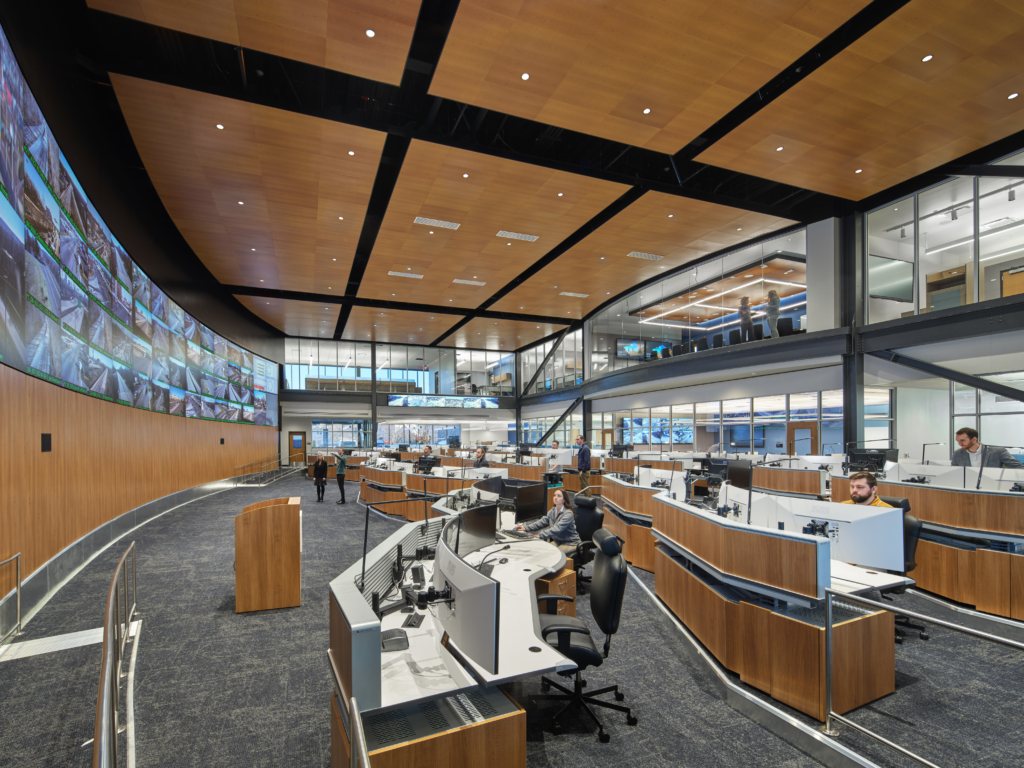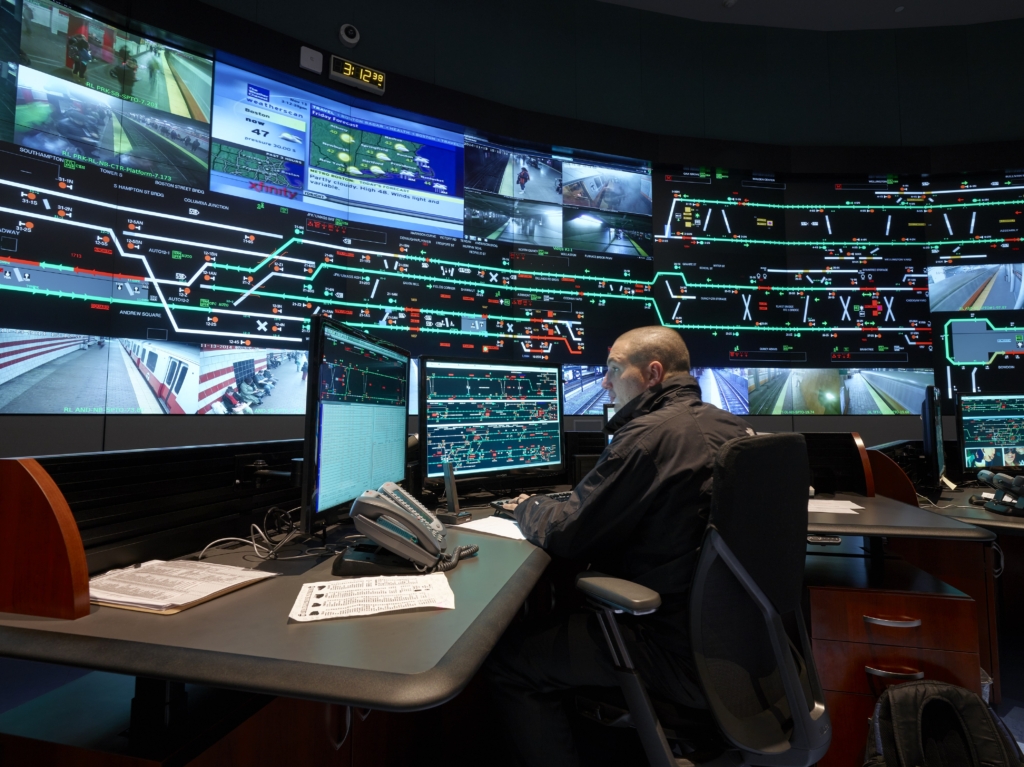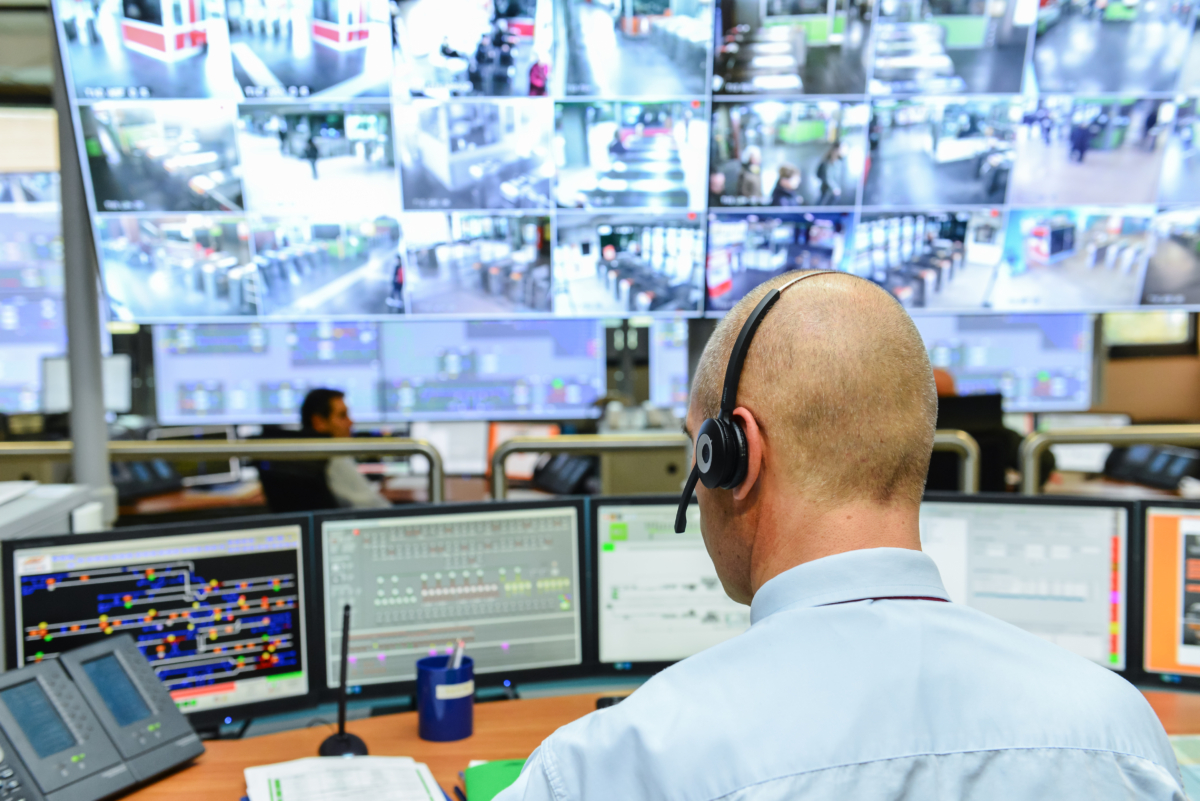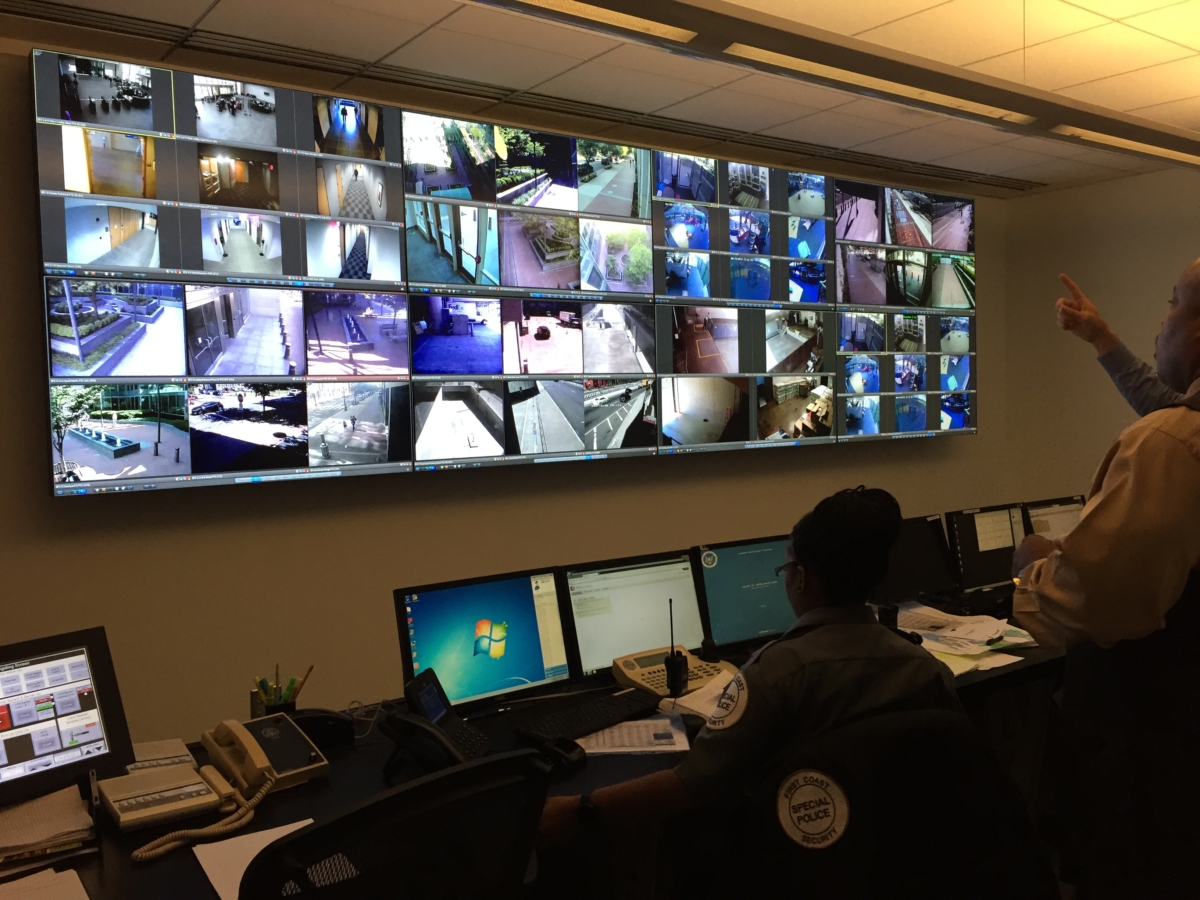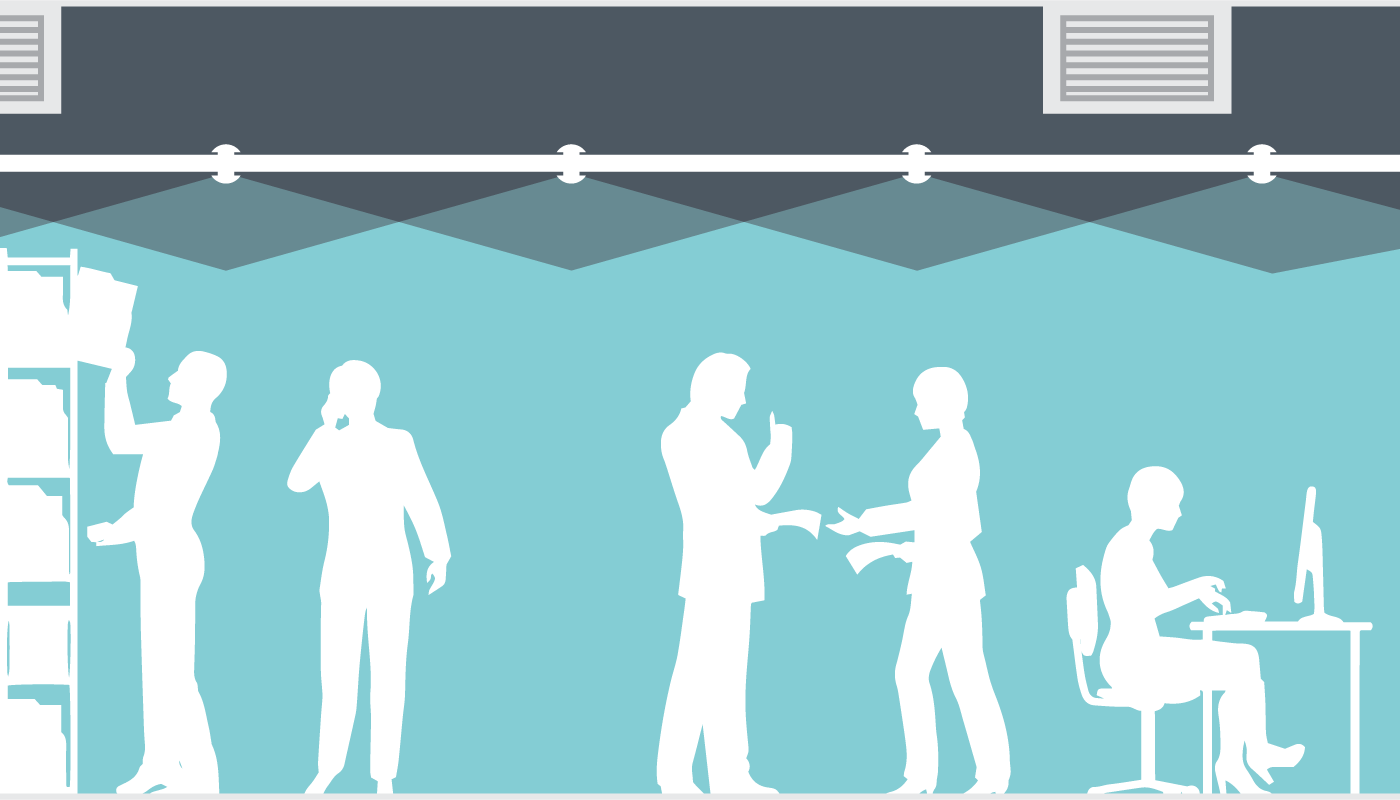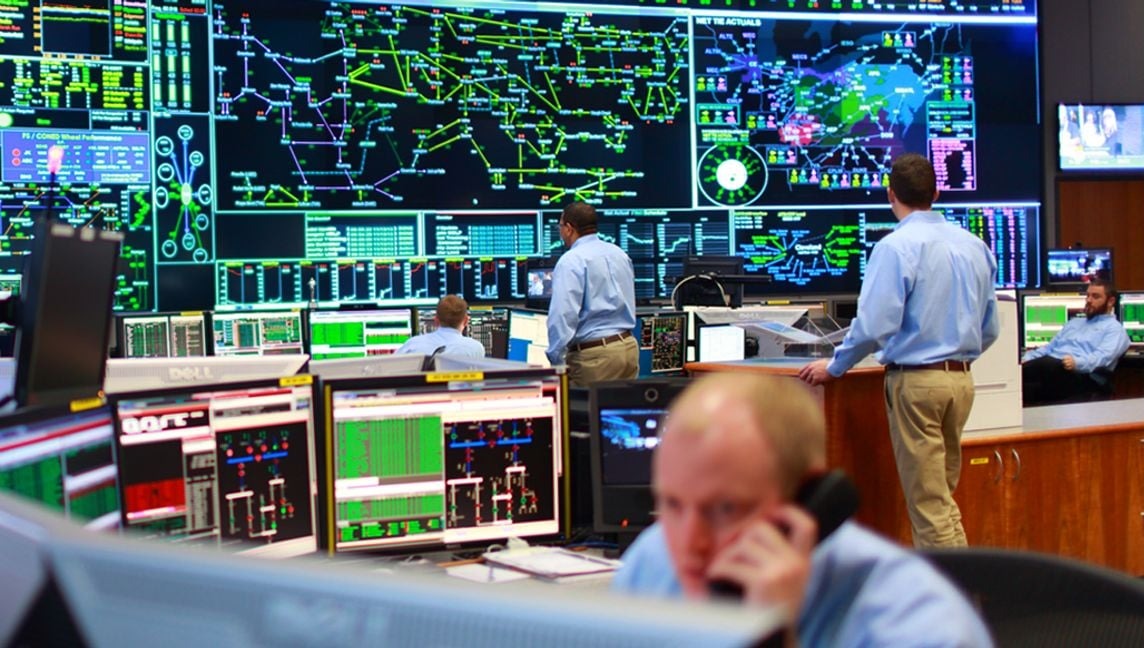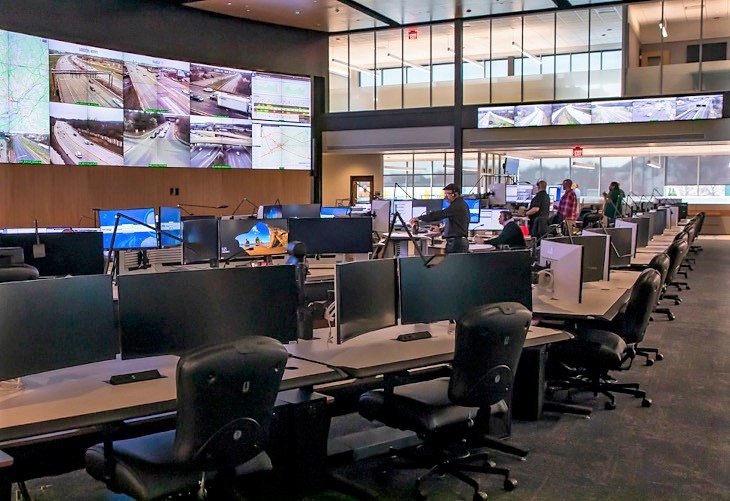
6 Key Design Elements for Building Ergonomic Control Centers
Stress. Poor performance. Fatigue. Low alertness. These are just a few dangerous outcomes of implementing an inadequate control room technology solution with a design that fails to prioritize operator comfort, well-being, and user-centered functionality.
To build a resilient and practical command center that minimizes inefficiencies, designing the technology and workspace infrastructure should always be a meticulous process that’s laser-focused on achieving ergonomic excellence.
Empowering Operators with Purpose-Built Solutions
In essence, ergonomic control room design puts the operator’s experience at center stage. The space, working conditions, form factors and the established technology ecosystem need to provide features and functionality that cater to specific operational tasks and maintain 24/7 comfort. It starts by putting the humans at the control room consoles first—to plan, design and build customized and complete system integrations—and to balance furniture, technology, and precisely configured workstation essentials; it’s the key to boosting productivity and effectiveness in mission-critical environments.
Especially when integrating solutions for today’s technologically advanced and information-rich control centers, there are several key design elements that can make or break whether functionality aligns with all tasks and operators are able to perform at their peak capabilities.
1) Optimized Workstations for Human Factors
Robots aren’t quite in control yet. A key element of the overall operations center design includes the workstations, where command and control is at the fingertips of the person ready to safeguard operations, protect lives and assets, analyze intelligence, and manage critical resources. Going beyond just equipping these workstations so that every operator and every shift can effectively take on the mission, implementing systems and technical furniture purposefully with ergonomic design principles will create comfortable and conducive operational cornerstones of productivity. Here are the core design factors for these spaces:
- Adjustable Sit/Stand Consoles
One of the fundamental options in creating an ergonomic workspace is the use of sit/stand consoles for operators. These consoles offer several benefits, including reducing back pain by allowing operators to alternate between sitting and standing positions throughout their shifts. Unshackling them from sitting round-the-clock keeps operators engaged and focused, promoting alertness during long hours of monitoring and control. They also accommodate operators of different heights, ensuring a comfortable and customized working experience for everyone. - Console Workstation Options and Features
In addition to adjustable height, the strategic design of console workstations plays a significant role in operator comfort and efficiency. A well-designed console configuration should account for arm reach, providing ample space for operators to comfortably access controls and devices without straining. It should also include sufficient storage and accessibility for IT hardware devices, cables, and power sources, ensuring a clutter-free and organized workspace. Furthermore, features like adjustable monitors allow operators to customize their viewing angles, reducing eye strain and enhancing overall usability—which also helps in future-proofing operations as personnel change and visualization needs shift. - 24/7-Rated Ergonomic Control Room Chairs
Equally important to the ergonomic setup is the choice of chairs for operators. Every operator is unique, and having flexible, durable seating options is crucial. 24/7-rated chairs are manufactured to meet the demands of constant use in control room environments. They provide adjustability to accommodate different body types and preferences, ensuring operators can maintain proper posture and comfort throughout their shifts. Ever sit in an old, uncomfortable chair for more than a couple of hours? These specialized chairs are essential for preventing fatigue and promoting long-term well-being.
2) Centralized Control and Streamlined Command
For many control room operators, effectiveness is tied to their workspace. Today, picture an average of 3 to 8 displays with 2 to 4 different PCs at each console, depending on the nature of oversight and response.
With the integration of proven advancements in data management, visualization, and the versatile control of sources, such as modern KVM (Keyboard, Video, Mouse) solutions, the work surface and the interaction with mission-critical visual data can be made a little more convenient, operator-friendly, and less of a daily workflow hassle.
Imagine decluttered workstations with a single keyboard and mouse, effectively centralizing control functions and making it possible to interface with all screens, dashboards, and integrated sources. By enabling operators to intuitively manipulate multiple streams of information from different sources in real-time, these solutions often result in faster response times without the added frustration of manually switching between workstation control touchpoints.
Moreso, these capabilities help streamline mission-critical taskwork and ease the burden of technology on everyone. Operators can visualize real-time data from diverse sources effortlessly and with less friction to focus on their core responsibilities with increased confidence. Cleaner workspaces and flexible control capabilities—for both routine and emergency situations—also tend to boost morale in the control center, reduce distractions, and lead towards more effective monitoring, communication, and incident response.
As an extension of the operator’s streamlined command and control posture, the purposeful design and integration of video conferencing platforms with automated AV component connectivity at the desktop will facilitate rapid communication during high-stakes situations. These workstation design configurations are future-proofing operations across industries; more efficient decision-making and better operational resilience are a direct result of being able to quickly evaluate and respond to critical events with the right collaborators, anywhere, providing real-time support.
3) Mission-Critical Environmental Conditions
When designing a control room, environmental conditions play a critical role in operator comfort and performance. Lighting levels are crucial, not just for visibility but also to support the natural circadian rhythm of operators, especially those working late-night shifts. Human-centric lighting (HCL) is a comprehensive approach that considers how lighting impacts operators’ well-being, productivity, and comfort. By incorporating HCL solutions, such as adjustable lighting options and lighting that mimics natural daylight, control rooms can support operators’ circadian rhythms, reduce fatigue, and enhance their ability to respond effectively in high-pressure situations.
In addition to lighting, other environmental factors like heat, noise, and open collaboration zones are equally important. Operators need a comfortable environment that minimizes distractions and promotes focus. Ergonomically designed control rooms with optimized airflow management, noise reduction measures and acoustic treatments, and properly configured collaborative spaces as an extension of operational procedures contribute significantly to preventing fatigue and agitation.
4) Ensuring Every Second Counts: Minimized Foot Traffic for Full Concentration
The spatial elements in the mission-critical control room design should holistically focus on minimizing interruptions and distractions to avoid split-second lapses in decision-making capacity. With that in mind, often overlooked is the day-to-day foot traffic around operators, the talking patterns that are likely to occur, and the physical entry and exit points. Reducing foot traffic and the activities that come with people arriving and leaving isn’t just about keeping a floor clear for central command—it’s about creating a mental sanctuary for operators to concentrate fully on their tasks amidst high-pressure situations and decisions.
A few strategic solutions for this that operations managers and control room administrators can consider involve updates and changes to ancillary operational needs. But, implementing one that fits well within the environment and workplace procedures can, in turn, streamline service processes and enhance efficiency for many departments, not just command and control ops.
- By remoting or virtualizing PCs, operation centers can reduce potential distractions and improve the overall health and security of staff because it means that IT professionals aren’t required to physically enter the facility to troubleshoot and service machines.
- Consider putting essential services in closer proximity and making them more immediately available when staff members step away from the common operational picture for other functions or needs; think break areas and rest rooms. Keeping them inside the control room will eliminate unnecessary interactions.
- Similarly, integrating video conferencing spaces somewhere within the control room environment itself will have the equivalent outcome, minimizing outside staff and non-essential personnel from entering the space.
5) Easy and Effective Oversight: Overview Video Wall
The incoming information for an operator is what makes the difference between responding effectively and missing the mark. After all, the quality of decision-making hinges on the quality of data displayed, managed, and communicated. A centralized overview video wall can help paint a Common Operational Picture (COP) that enhances shared situational awareness throughout the control room and promotes effective task-level response by providing a single-pane-of-glass view of operational statuses and ongoing incidents.
Choosing the right video wall display technology that can be easily integrated into existing command center systems, endpoint technology deployments, and network solutions will help make the video wall installation a seamless process and add more value to your investment.
A professionally integrated video wall system provides operators with the best possible visualization experience, ensuring that characteristics of the display system and the final installation are in-line with ergonomic viewing standards. Plus, they gain access to a valuable resource that, as data management and distribution technology progresses, is increasingly easier to control and optimize for actionable intelligence.
6) Precise Operator Sightlines and Console Layout
On that note, ensuring optimal sightlines for operators not only improves comfort while interpreting real-time situational awareness, but it also boosts performance and reduces fatigue simply by always having a convenient and reliable operational picture. To achieve this, easy adjustments, such as staggering consoles or elevating desks, can make a significant difference in operator experience.
In some cases, an effective approach is to utilize modular sections that maximize available space while maintaining a spacious feel. This is particularly important in 24/7 control centers where operators need to remain alert and focused during extended shifts.
Also, to avoid situations where operators are staring at the back of someone else’s head or straining to see key information, precise console configurations centralized around video wall arrays should be designed so primary screens are directly in the operator’s optimal field of view, boosting productivity and data management proficiency.
Propelling Operator Performance with Trusted Technology Solutions
A meticulous ergonomic approach to control room system design and integration is the driving force behind high-performance operations of the future. Why? It effectively optimizes operator functionality for the long run—with features and specifications actually designed for the individuals responsible for making the mission possible.
At CTI, we want to help you create more operator-centric, ergonomic, and effective mission-critical environments. We are ready to help you design, build, and maintain a control center that takes your operations to a new level of efficiency—anywhere in the world.
Talk to us today to discover all the ways we can transform command and control with trusted technology solutions.
Talk to Us About Your Project
Too busy to chat right now?
Send us a message.

